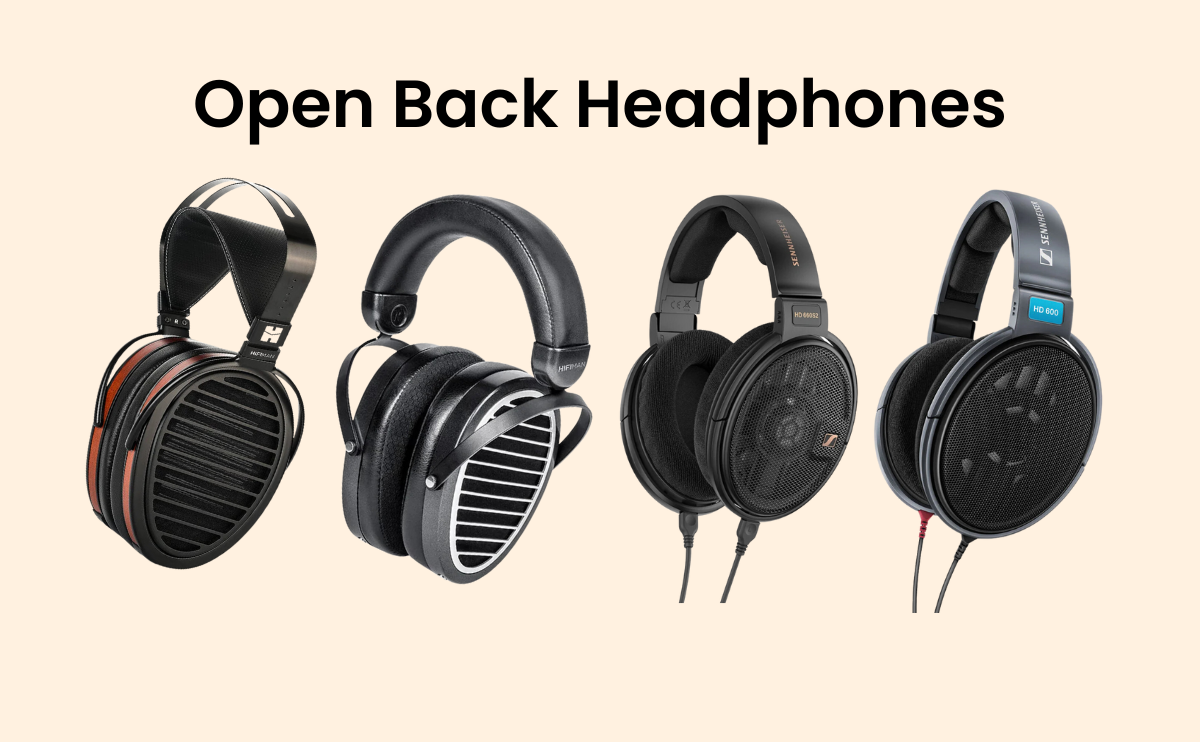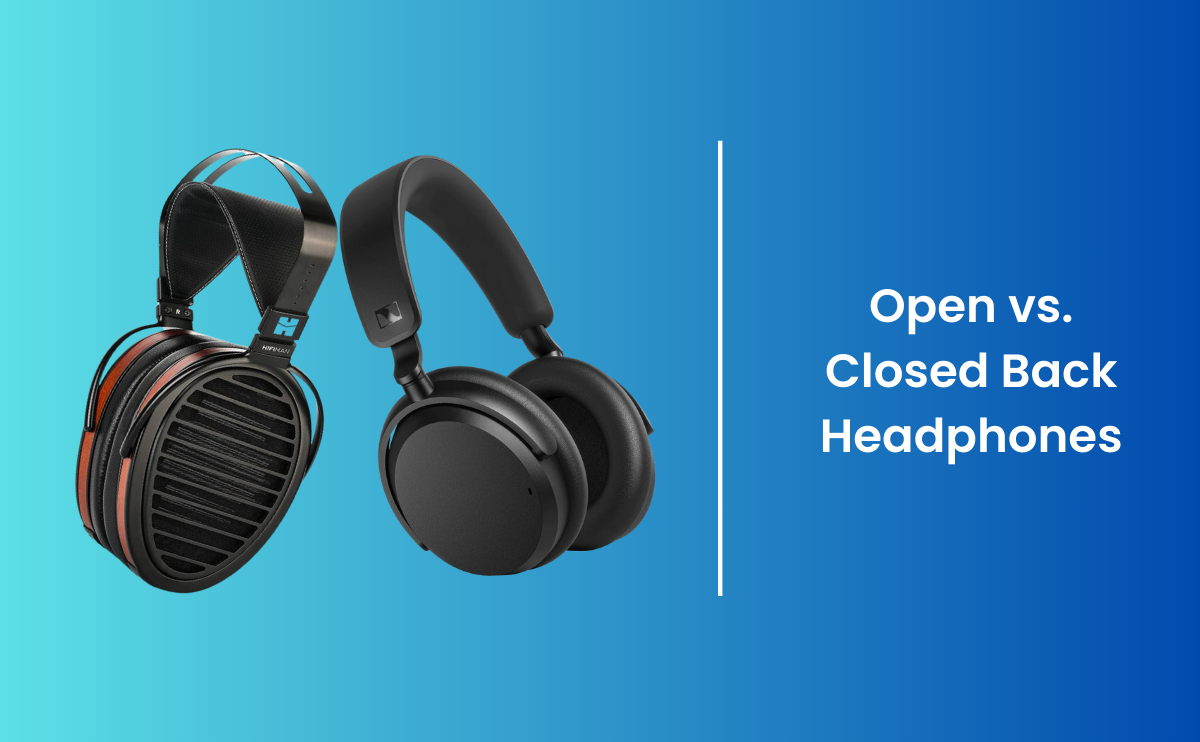When diving into the world of headphones, one of the primary decisions you’ll encounter is choosing between open-back and closed-back designs. Each comes with its own set of advantages and limitations, catering to different listening preferences and environments. In this article, we’ll delve into the characteristics, pros, and cons of open-back and closed-back headphones, helping you make an informed decision.

Open Back Headphones: A Breath of Fresh Sound
Open-back headphones are characterized by their perforated ear cups, allowing sound to flow freely in and out. This design creates a more spacious, natural soundstage, akin to listening to speakers in a room. The open-back design also helps prevent sound pressure buildup within the ear cups, resulting in a more airy and immersive listening experience.
Pros of Open Back Headphones:
- Wide Soundstage: Open-back headphones offer a broader sense of space, making them ideal for critical listening and immersive experiences such as gaming or watching movies.
- Natural Sound Reproduction: With less interference from enclosed ear cups, open-back headphones tend to produce a more natural, authentic sound.
- Comfort: The breathable design of open-back headphones often leads to increased comfort during long listening sessions, as it reduces heat buildup around the ears.
Cons of Open Back Headphones:
- Sound Leakage: Since sound is not contained within the ear cups, open-back headphones tend to leak sound, making them unsuitable for use in shared or noisy environments.
- Limited Isolation: The open design allows external noise to seep into the ear cups, diminishing isolation and potentially impacting concentration in noisy environments.
- Bass Response: While open-back headphones excel in midrange and treble reproduction, they may lack the punchy bass response found in closed-back designs.
Ideal Situation to Use Open Back Headphones: Open-back headphones shine brightest in quiet, controlled environments where sound leakage and isolation are not major concerns. They are perfect for audiophiles, studio professionals, or anyone seeking an immersive, natural listening experience.

Closed Back Headphones: Your Private Sound Sanctuary
Closed-back headphones feature sealed ear cups, effectively isolating the listener from external noise while containing sound within the cups. This design provides a more intimate, focused listening experience, making closed-back headphones a popular choice for everyday use and on-the-go scenarios.
Pros of Closed Back Headphones:
- Noise Isolation: Closed-back headphones excel at blocking out external noise, making them suitable for use in loud or crowded environments like offices, commutes, or gyms.
- Enhanced Bass Response: The sealed design of closed-back headphones often results in stronger bass reproduction, delivering a punchy, impactful low-end.
- Privacy: With minimal sound leakage, closed-back headphones allow you to enjoy your music without disturbing those around you, making them ideal for shared spaces.
Cons of Closed Back Headphones:
- Limited Soundstage: Closed-back headphones typically offer a narrower soundstage compared to open-back designs, which may affect the perceived depth and spatial imaging of the audio.
- Heat Buildup: The sealed ear cups can lead to heat buildup over extended listening sessions, potentially causing discomfort, especially in warmer climates.
- Potential for Listening Fatigue: The enclosed design may create a more fatiguing listening experience over time, especially for sensitive listeners, due to increased pressure on the ears.
Ideal Situation to Use Closed Back Headphones: Closed-back headphones are best suited for situations where noise isolation, portability, and privacy are paramount. Whether you’re commuting, working in a bustling office, or simply enjoying music in a shared space, closed-back headphones offer a personalized sound experience without disturbing others or being distracted by external noise.
In conclusion, the choice between open-back and closed-back headphones ultimately boils down to your listening preferences and the environments in which you’ll be using them. If you prioritize immersion, natural sound reproduction, and comfort in quieter settings, open-back headphones are likely the way to go. On the other hand, if noise isolation, portability, and privacy are your top concerns, closed-back headphones offer a more practical solution for everyday use. Whichever you choose, both open-back and closed-back headphones have their own unique charm, enhancing your listening experience in different ways.
At The Audio Store, we've curated a collection of high-quality open-back and closed-back headphones to cater to diverse preferences and needs. If you need any assistance in selecting the perfect pair for you, don't hesitate to reach out to us on WhatsApp. Our team of audio enthusiasts is here to help you find the ideal headphones to elevate your listening experience.






















